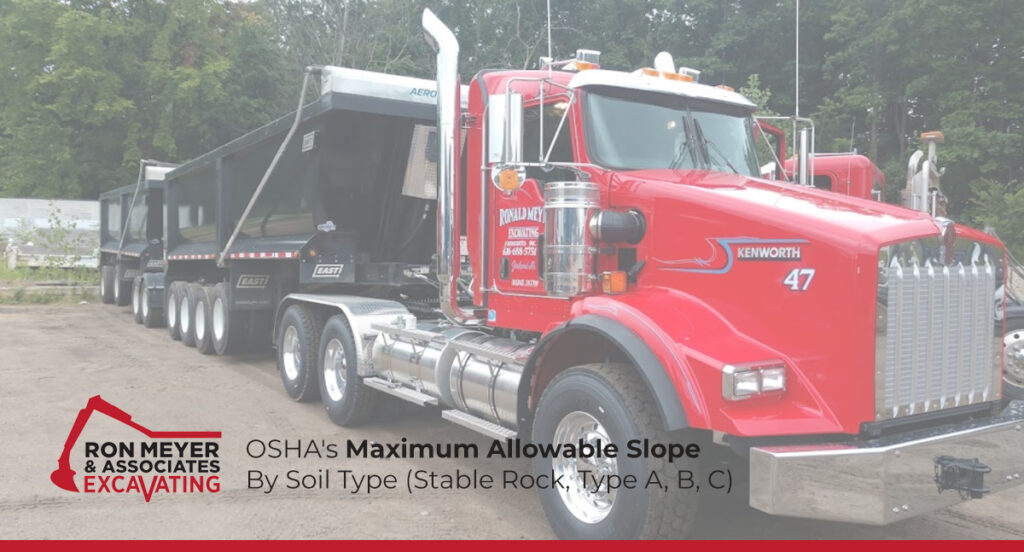
What is Maximum Allowable Slope?
Per OSHA, Maximum allowable slope means the steepest incline of an excavation face that is acceptable for the most favorable site conditions as protection against cave-ins, and is expressed as the ratio of horizontal distance to vertical rise (H:V). [Source]
Of note: Maximum Allowable Slope is a term that has replaced Angle of Repose, which due to conflicting and inconsistent definitions led to confusion as to the meaning of this phrase.
Maximum Allowable Slope by Soil Type
Maximum allowable slopes for excavations less than 20 ft (6.09 m) based on soil type and angle to the horizontal are as follows [Source]:
- Maximum allowable slope for Stable Rock is a vertical Height:Depth ratio / 90° Slope angle.
- Maximum allowable slope for Type A soil is a ¾:1 Height:Depth ratio / 53° Slope angle.
- Maximum allowable slope for Type B soil is a 1:1 Height:Depth ratio / 45° Slope angle.
- Maximum allowable slope for Type C soil is a 1½:1 Height:Depth ratio / 34° Slope angle.
| Soil type | Height:Depth ratio | Slope angle |
|---|---|---|
| Stable Rock | Vertical | 90° |
| Type A | ¾:1 | 53° |
| Type B | 1:1 | 45° |
| Type C | 1½:1 | 34° |
| Type A(short-term) | ½:1 | 63° |
For additional information, see OSHA Technical Manual (OTM) Section V: Chapter 2 and 1926 Subpart P App B – Sloping and Benching.
At Ron Meyer & Associate Excavating, Inc, we’ve been providing underground and commercial construction to private and commercial businesses for 39 years. As the general contractor or subcontractor, our experienced foremen, equipment operators, pipe layers, truck drivers and well-maintained equipment fleet make us an undeniable choice for your excavating services. Let’s talk about your project!
Sources:
- https://www.osha.gov/laws-regs/regulations/standardnumber/1926/1926SubpartPAppB
- https://www.osha.gov/otm/section-5-construction-operations/chapter-2#temest

As 45 years of experience as an underground/site contactor and a third generation contractor, Ron takes time to go through each individual project with the supervisor and is responsible for all scheduling and equipment logistics. He’s also involved in all troubleshooting for projects.